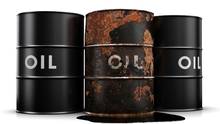OIL Bull Goldman sees end to rising prices
 Wall Street giant Goldman Sachs, one of the biggest banks in commodity trading, has called an end to the oil price super-cycle, reversing years of bullish recommendations, citing a rise in unconventional oil supplies in the United States and Canada.
Wall Street giant Goldman Sachs, one of the biggest banks in commodity trading, has called an end to the oil price super-cycle, reversing years of bullish recommendations, citing a rise in unconventional oil supplies in the United States and Canada.Goldman has been highest predictor among major oil price forecasters but said on Thursday “long-dated” or five-year forward Brent crude may be anchored at about $90 (U.S.) a barrel.
The bank also cut its 2013 Brent forecast to $110 a barrel from $130. Brent trade near $112 on Thursday.
“Over the past three years long-dated Brent crude oil prices have shown signs of stabilizing around $90 per barrel. This suggests a return to the pricing regime that characterized the crude oil market in the 1990s,” Goldman’s analysts Jeffrey Currie and David Greely said in a note.
“We expect that going forward long-dated oil prices will be anchored by the potential for substantial growth in crude oil supplies from U.S. shale, Canadian oil sands, and the deepwater. Net, we see a return to a structurally stable, but cyclically tight market,” they said.
The U.S. shale oil boom has seen the country’s oil production rising to multi-decade highs, catching many industry watchers by surprise, reshaping global oil flows.
The United States is now importing less crude from West Africa and the Middle East, leaving more volumes for booming demand in Asia. Some expect North America including Mexico and Canada to become a net oil exporter.
Goldman was a lead forecaster during the 2003-2008 oil price boom when unexpectedly robust demand in Asia outpaced global supply and prices soared as spare capacity in the Organization of the Petroleum Exporting Countries fell close to zero and the refining industry struggled to meet demand.
But just after the bank predicted a “super spike” to $200 a barrel in 2008, financial crisis hit the global economy. Oil prices collapsed from a peak of $147 in July 2008 to below $40.
This year, Goldman was slow to acknowledge bearish trends in U.S. light crude, closing its trading recommendation to buy September 2012 U.S. light sweet crude futures at loss on paper of 10.8 per cent..
“Goldman was a little out of kilter with their $130 (Brent) call. We have nudged up to that level on occasion but that’s when you see U.S. gasoline go above $4 a gallon and that has a behavioural response,” said Will Riley, who helps co-manage $284-million at the Guinness Global Energy Fund.
Gregory Cain, portfolio manager of Ebullio’s eFED Commodity Fund, agreed that the market was becoming more and more aware of increasing supplies.
“Most of the rally we have seen this year has been due to liquidity. Now that’s all been priced in,” said Cain.
FLOOR AND CAP ON PRICES
U.S. crude oil production has risen above 6.6 million barrels per day, the highest since 1995, thanks largely to new technologies that have allowed shale hydrocarbons to be produced more economically.
The development has fuelled ideas of North American energy independence and a subsequent shift to lower oil prices.
“The growth will likely put a cap on long term oil prices, making any runaway increase in average prices much above $110-$115 per barrel, beyond geopolitical or economic reasons, increasingly difficult,” said Amrita Sen at thinktank Energy Aspect.
Sen previously worked as energy analyst at Barclays , which together with Goldman, Deutsche Bank, Morgan Stanley and JP Morgan, are the biggest banks in commodities.
All now have sharply cut their price outlooks for 2013.
Banks earn money in commodities by selling hedging services to clients. Goldman’s Thursday note carried page section devoted to recommendations to oil consumers, producers and refiners.
Goldman this month saw significantly lower revenues from commodities drag down its trading businesses in the third quarter.
Sen said that oil was unlikely to fall much below $90 a barrel because lower prices make development of new shale projects uneconomic.
“If we move away from $90 plus Brent prices, non-OPEC supply will be struggling again,” she said.
You can return to the main Market News page, or press the Back button on your browser.

